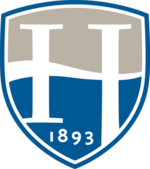
Roanoke College is a private liberal arts college in Salem, Virginia. It has approximately 2,000 students who represent approximately 40 states and 30 countries. The college offers 35 majors, 57 minors and concentrations, and pre-professional programs. Roanoke awards bachelor's degrees in arts, science, and business administration and is one of 280 colleges with a chapter of the Phi Beta Kappa honor society.

The University of La Verne (ULV) is a private university in La Verne, California. Founded in 1891, the university is composed of the College of Arts & Sciences, College of Business & Public Management, the LaFetra College of Education, College of Law, College of Health and Community Well-Being, an online adult school, two military centers, and a Regional Campus Administration that oversees six regional campuses. It awards undergraduate, graduate, and doctoral degrees. Many of their classes are taught at smaller campuses throughout the greater Los Angeles area and Kern County.

Northwestern College is a private Christian college in Orange City, Iowa, that is Reformed, evangelical and ecumenical. Established in 1882, it offers more than 135 academic programs and enrolls over 1,700 students in undergraduate, graduate and online programs.
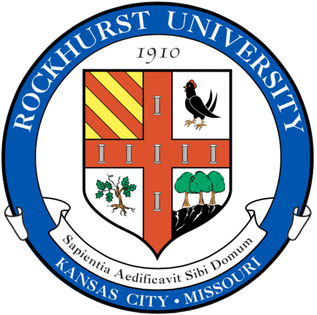
Rockhurst University is a private Jesuit university in Kansas City, Missouri. Founded in 1910 as Rockhurst College, Rockhurst University is accredited by the Higher Learning Commission. It enrolled 2,980 students in 2019.

Spelman College is a private, historically Black, women's liberal arts college in Atlanta, Georgia. It is a founding member of the Atlanta University Center academic consortium. Founded in 1881 as the Atlanta Baptist Female Seminary, Spelman awarded its first college degrees in 1901 and is the oldest private historically Black liberal arts institution for women.
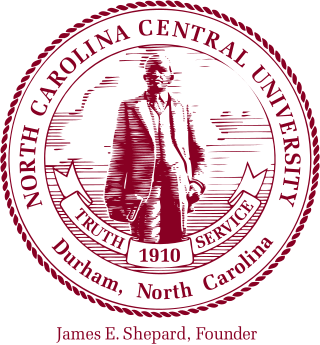
North Carolina Central University is a public historically black university in Durham, North Carolina. Founded by James E. Shepard in affiliation with the Chautauqua movement in 1909, it was supported by private funds from both Northern and Southern philanthropists. It was made part of the state system in 1923, when it first received state funding and was renamed as Durham State Normal School. It added graduate classes in arts and sciences and professional schools in law and library science in the late 1930s and 1940s.

Moravian University is a private university in Bethlehem, Pennsylvania. The institution traces its founding to 1742 by Moravians, descendants of followers of the Bohemian Reformation under John Amos Comenius. Founded as a girls school in 1742, the College itself was founded as the Moravian College and Theological Seminary in 1807 and was accredited in 1863. In 2021, the College was elevated to a University. Moravian University uses the foundation of the Girls school as their foundation date which would make them the sixth-oldest college in the United States.

Virginia Intermont College (VI) was a private college in Bristol, Virginia. Founded in 1884 to create additional educational opportunities for women, the college had been coeducational since 1972. It experienced significant financial difficulties during the last years of its existence, was denied accreditation in 2013, and announced its closure on May 20, 2014.

Bennett College is a private historically black liberal arts college for women in Greensboro, North Carolina. It was founded in 1873 as a normal school to educate freedmen and train both men and women as teachers. Originally coed, in 1926 it became a four-year women's college. It is one of two historically black colleges that enroll only women, the other being Spelman College.
Stevenson University is a private university in Baltimore County, Maryland with two campuses, one in Stevenson and one in Owings Mills. The university enrolls approximately 3,615 undergraduate and graduate students. Formerly known as Villa Julie College, the name was changed to Stevenson University in 2008.

Notre Dame of Maryland University is a private Catholic university in Baltimore, Maryland. NDMU offers certificate, undergraduate, and graduate programs for women and men.
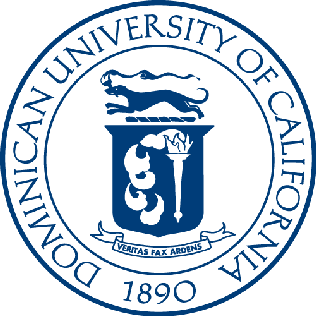
Dominican University of California is a private university in San Rafael, California. It was founded in 1890 as Dominican College by the Dominican Sisters of San Rafael. It is one of the oldest universities in California.

Anne Arundel Community College (AACC) is a public community college in Arnold, Maryland. The college was founded in 1961 and is accredited by the Middle States Commission on Higher Education. The community college offers letters of recognition, 46 associate degree programs, and 62 certificate programs through its five schools.
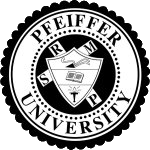
Pfeiffer University is a private university in Misenheimer, North Carolina. It is affiliated with the United Methodist Church.

Salem State University is a public university in Salem, Massachusetts. Established in 1854, it is the oldest and largest institute of higher education on the North Shore and is part of the state university system in Massachusetts.

Aurora University (AU) is a private university in Aurora, Illinois, United States. In addition to its main campus, AU offers programs online and at its George Williams College campus in Williams Bay, Wisconsin. Approximately 6,200 students are enrolled in bachelor's, master's, and doctoral degree programs at Aurora University.
The Mount Vernon Seminary and College was a private women's college in Washington, D.C. It was purchased by George Washington University in 1999, and became the Mount Vernon Campus of The George Washington University.
Andrew Gehr Truxal was the third president of Hood College and the first president of Anne Arundel Community College. Truxal was a lifelong academic serving as instructor at several institutions and chairman of the sociology department of Dartmouth College.

Wilmington University (WilmU) is a private university with its main campus in Wilmington Manor, Delaware, with a New Castle street address. It was founded in 1968 as Wilmington College by educator Donald E. Ross. As of 2016, the university served a total student body of 20,522 undergraduate and postgraduate students in nearly 100 degree and certificate programs. The university's programs are offered at its main campus in historic New Castle as well as at six additional campuses in Delaware, several partnership locations in New Jersey, and a single partnership location in northeastern Maryland.

Ely Hall is a two-story Richardsonian Romanesque classroom and laboratory building on the campus of Vassar College in the town of Poughkeepsie, New York, US. The structure houses Vassar's Department of Earth Science and Geography, the A. Scott Warthin Jr. Museum of Geology and Natural History, and the Aula, a spacious and frequently used gathering space.
